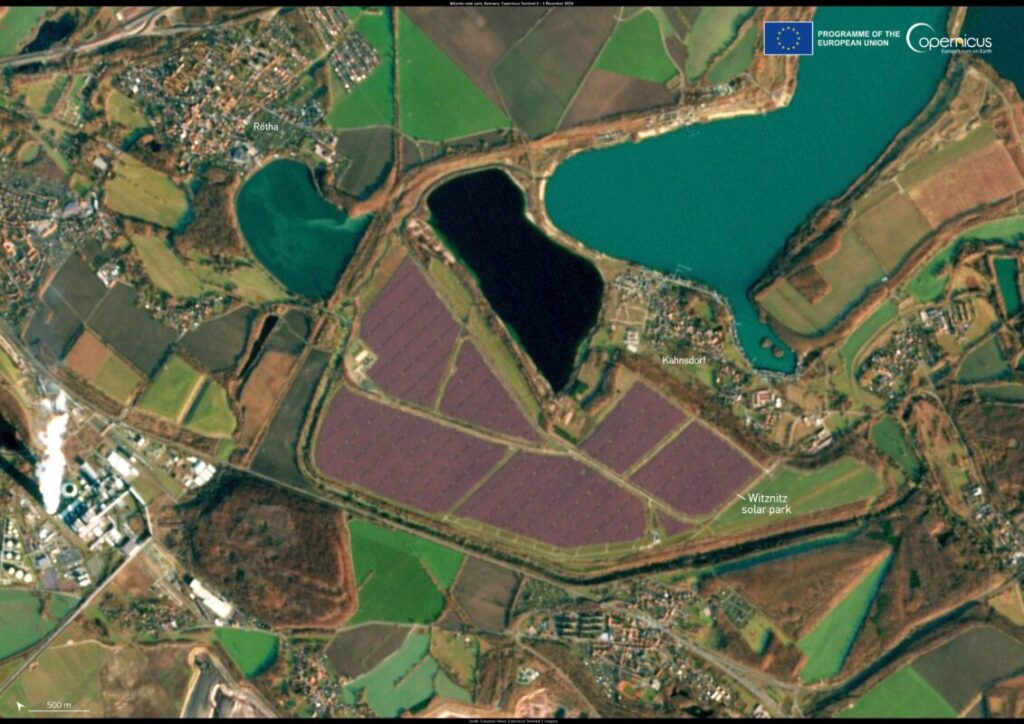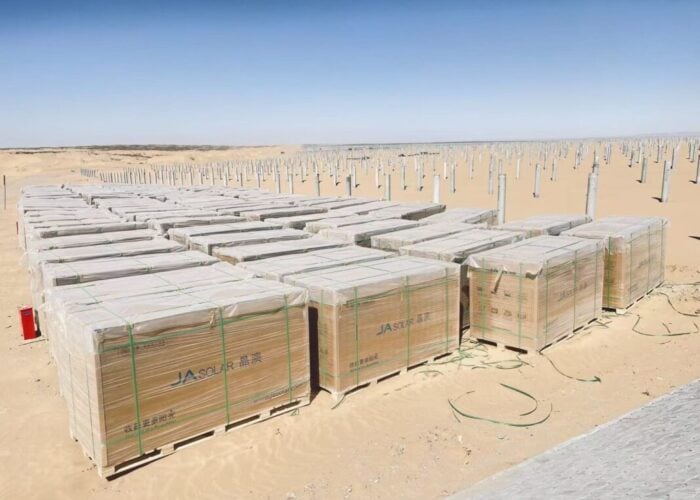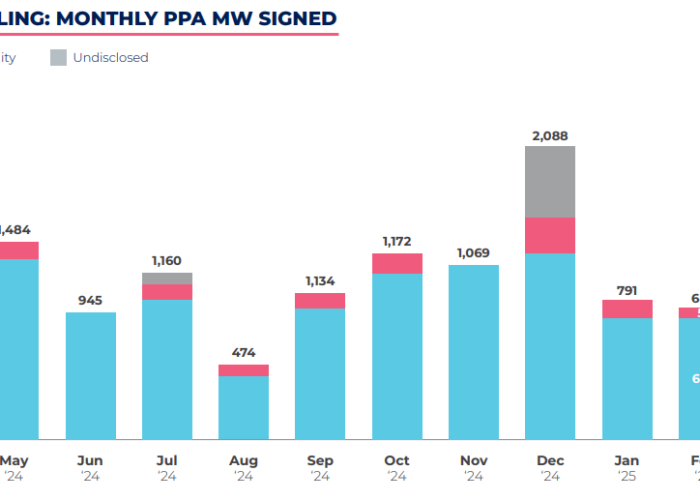
Solar’s rapid global expansion has attracted the unwanted attention of those ideologically or commercially opposed to its ongoing success. Becquerel Institute CEO Gaëtan Masson considers how the PV industry in Europe can see off the attacks as the stakes become higher.
With almost 600GW installed in 2024, the question of whether PV is now a mainstream technology is not debatable: it is.
Unlock unlimited access for 12 whole months of distinctive global analysis
Photovoltaics International is now included.
- Regular insight and analysis of the industry’s biggest developments
- In-depth interviews with the industry’s leading figures
- Unlimited digital access to the PV Tech Power journal catalogue
- Unlimited digital access to the Photovoltaics International journal catalogue
- Access to more than 1,000 technical papers
- Discounts on Solar Media’s portfolio of events, in-person and virtual
Or continue reading this article for free
And its development generates a mix of positive and negative reactions across the board. The energy transition, in general, is a complex process that aims at complementing and then replacing conventional energy sources. In Western countries, the energy transition negatively impacts incumbents: coal and gas power plants are being phased out, nuclear is suffering and each EV on the road diminishes the amount of oil consumption. While the PV community sees these changes as positive and contributing to accelerating the fight against climate change, incumbents see their investments being challenged, their value reduced and companies closing.
Needless to say, some politicians are exploiting the negative side of the energy transition to further their own personal positions and play the conservative card. Hence, we saw some German politicians campaigning against heat pumps and French ones opposing the 2035 internal combustion engine car ban in the European Union, regardless of any climate crisis.
But the strongest opposition in recent years came from the current US administration: while many focused on Elon Musk as the key financer of the Trump presidential campaign, they forgot that the total sum gathered from the oil and gas industry dominated the list. And the first decisions taken by the new US administration were absolutely clear: taking the country out of the 2015 Paris Agreement, targeting all measures favouring EVs (to the extent of dismantling 8,000 charging points in US agencies), freezing support to wind and, while it hasn’t been publicised much, support for solar PV is coming next. When the new secretary of state for energy was claiming that climate change is the consequence of building a modern world, the president himself was begging to save the oil and gas industry. From that perspective, it’s no surprise if the country selected to host Ukraine peace talks is … Saudi Arabia, a major oil and gas producer (just like Russia). We recognise symbols only when we see the pattern.
And the pattern is clear, big oil won’t die without a fight.
If we assume that fossil fuels will divide the world, we can understand that the biggest promoters of renewable energies and the energy transition will become the least appreciated US trade partners: the European Union and China might sit together, facing the oil and gas folks.
‘An economic tool’
I recent heard someone ask, “Is PV woke?”, which isn’t a surprise: left-wing parties have promoted heavily the energy transition, to the extent PV could now appear as a polarised political subject. Too often, we can wear this as a badge of honour: PV and the energy transition will reshape society, diminish inequalities, empower citizens and communities, and more. But this is just one side of the energy transition: solar PV, in the same way it spans from small off-grid applications to gigawatt-scale power plants, is a tool that could generate benefits across the political spectrum: yes it could reduce inequalities and empower communities, but it also reduces the energy bill of SMEs and industrial businesses. It is an instrument of economic growth, based on an industry that will soon reach a trillion euros in annual turnover. And it can play a major role in increasing energy sovereignty, with a faster deployment than any other source of energy.
In a nutshell, PV is an economic tool that provides results depending on how it is implemented. Branding PV as woke (or anything else) has to be seen as an attempt by incumbents to delay its emergence.
The fast development of renewables and, in particular, PV has surprised many, probably because they were looking in the wrong direction for many years. And some incumbents are reacting aggressively: the current European offensive by the nuclear industry is proof of the tremendous success of PV in recent years. With more than 300GW of PV in Europe, PV is reaching the point of minimum power demand in the EU, and in some countries, PV production some days already exceeds demand, saturating interconnections and pushing market prices below zero. While this was predictable for a long time (See my 2012 EPIA report called “Connecting the Sun”, which explained how 15 to 25% of PV combined with high wind levels would generate massively negative prices at the EU level.), here we now are.
With negative prices increasing, the business model for must-run power plants (such as nuclear) is endangered and therefore, the nuclear industry is looking for ways to publicly finance future reactors. In France, it has convinced the current government to reduce the extent of future PV development, creating uncertainty for the current one and complicating once again procedures. No surprise, PV is under attack. The government is already reducing the share of PV in the future French electricity mix, has suddenly reduced the financing incentives for residential and C&I installations and is now targeting the growing agriPV segment.
To navigate uncertain times, the entire PV value chain must understand the current trends and answer swiftly and smartly, or face oblivion.
First, sovereignty is again a keyword that the PV industry has to live with. That doesn’t imply manufacturing everything in Europe; it implies the possibility of not depending fully on external providers. In that respect, the Net Zero Industry Act and the incoming Clean Industrial Deal from the European Commission will define a market for local products. While the process is much too long and complex, it goes in the right direction and will help re-establish a local industry. Whether this industry should collaborate with Chinese partners is a no-brainer: Chinese manufacturers should be welcomed in Europe at all steps of the value chain, in partnership with European companies, and with some investment guarantees. The objective must remain to recreate a complete industrial value chain in Europe, supporting new and existing European manufacturers and ensuring mutually beneficial Chinese investments in Europe. One of the conditions shall be to include all steps of the value chain, including those China is reluctant to delocalise: from cells to ingots.
That also implies a paradigm shift in the heads of many developers and EPCs in Europe, which have been reluctant (to remain polite) to accept any kind of barrier which could have favoured local industrial development. Still, a large part of the industry refuses to acknowledge that the world has changed. But without barriers or incentives, the competition will remain uneven.
I have heard many times that we could afford to import only Chinese PV components, creating jobs at installation and engineering levels. This is neglecting completely the critics that I mentioned above: the energy transition is destroying countless industrial jobs in conventional energies, including nuclear, and not replacing these jobs is becoming a real friction point for many policymakers in Europe. In the same way that the automotive industry has pushed for some local battery manufacturing, the PV industry needs its local resources. Failing to go in this direction will reduce or halt the development of PV in Europe.
Integration
We shouldn’t forget that PV development will require regulatory developments and huge investments to adapt our energy systems. This is the second difficulty: the integration of PV in the energy systems – a polite term to describe overloaded distribution grids (the Netherlands is a perfect example) and (because it is not just about the grid), the balance of supply and demand of electricity. As mentioned previously, direct PV injection is already doomed as a non-regulated business model: negative prices in the sunniest
and most profitable markets are impairing financing. As seen in Australia for many years, storage is the optimal option to better smooth PV injection and improve revenues. Revenue staking from energy only markets is increasingly completed with reserves, capacity and ancillary services markets that are expected to significantly develop in the coming years. The question of grid tariffs (grid use and grid connection) should also be at the core of the discussion: when some countries are applying grid connection fees as high as €0.2/Wp, needless to say that the competitiveness of PV electricity could become challenging.
After 2030, the shift of transport, heating and industry towards electricity might solve the negative price issue, providing smart management from public authorities of the energy transition (again we are coming back to the political debate). The integration of PV with other renewable energy sources, storage, hydrogen generation and more will complexify the landscape for developers.
Third, social acceptance will increasingly become a key issue for PV developers: while PV reaches widespread adoption, the opposition to “PV everywhere” will continue growing and will imply the need to develop seamless solutions: improving the possible dual use of space, in buildings, in agriculture, on water reservoirs, along already built infrastructure and vehicles, might smooth the public’s acceptance, while well-paid industrial jobs will provide an improved image of PV development. Energy communities might also support PV deployment by transferring rightly the benefits of its development to final customers.
Fourth, navigating a complex global environment and the uncertainty about components’ prices will continue to be a key element of sound business models: while the current price levels for PV modules and some other components doesn’t reflect their real economic cost, the extent to which these prices will increase in the coming years remains a fascinating question. The fierce competition between Chinese manufacturers will stabilise and prices will converge towards higher, sustainable prices. One will have to realise that companies must be profitable, even in China.
While components’ prices will stabilise, costs will have to be contained since PV cannot benefit any more from any financial support. Too many actors in the PV sector have benefitted from financial subsidies and complained about their phasing out in the past. In Europe today, PV will have to develop and thrive without any financial support: lower capital costs, reduced grid costs (this remains too often a barrier to wider adoption of PV in many countries) and optimised operation and maintenance costs will be key factors to consider.
Fifth, the rise of artificial intelligence will impact all aspects of PV developments, from sales to manufacturing, engineering, operations and maintenance, and more, reducing costs for the companies able to embrace that paradigm shift and reaching all aspects of the value chain. Becquerel Institute will publish in Q2 2025 a complete analysis of that ongoing tsunami.
As a temporary conclusion: the development of PV has always been political. PV developed thanks to visionary politicians in a limited number of key countries and smart industrialists (and China’s amazing PV development has to be recognised). But this also coloured PV politically, and it is more than time to bleach PV development: energy has no political colour and shouldn’t; PV has the keys to reducing energy costs while combatting the worst effects of climate change.
And finally, is PV woke? As President Macron of France would say, you can be everything at the same time, depending on the perspective: PV is Woke, PV is Sovereign, PV is an economic tool and PV is the main source of electricity of this century. Better starting to acknowledge it.
Author
Gaëtan Masson is the managing director of the Becquerel Institute, which he co-founded in 2014. He coordinates the Task 1 “Expertise and Awareness” group of the International Energy Agency PV Programme (IEA PVPS). He led the PV Industry Working Group of the European PV Technology and Innovation Platform (ETIP-PV), of which he was co-chair from 2014 to 2019, and resulted in the creation of the European Solar Manufacturing Council, of which he has been co-chair since its foundation in 2019. In 2020 he received the Daejoo Award for his contribution to the development of photovoltaics.







